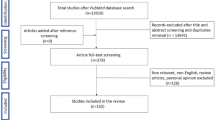Summary
Plasma and skin blister fluid concentration-time curves following a single oral dose of trimethoprim have been evaluated. Skin blisters were produced by the cantharides technique, using patches with cantharidin ointment. Trimethoprim concentrations in plasma following multiple doses of 200 mg were also determined. The maximal concentration in plasma after a single oral dose of 400 mg trimethoprim was 3.95±1.08 mg/l, and it was observed after 2 h, whereas in skin blister fluid the level was 2.21±0.62 mg/l, and it was delayed for up to 6 h. This means that a certain time is required for drug transfer from the capillaries via the basal membrane into blister fluid. Penetration of the drug into blister fluid, defined as the ratio of the areas under the trimethoprim level time curve in skin blister fluid to that of plasma, was 0.826±0.096. The steady-state concentration of trimethoprim in plasma during routine treatment with 200-mg doses ranged between 2 and 3.5 mg/l.
Similar content being viewed by others
References
Burchall JJ (1973) Mechanism of action of trimethoprim-sulfamethoxazole-II. J Infect Dis 128 [Suppl]: 437–441
Nowak A, Kadyków M, Klimowicz A (1983) Penetration of trimethoprim and sulfamethoxazole into skin blister fluid. Eur J Clin Pharmacol 25: 825–827
Gibaldi M, Boyes RN, Feldman S (1971) Influence of first-pass effect on availability of drugs on oral administration. J Pharm Sci 60: 1338–1340
Bushby SRM (1973) Trimethoprim-sulfamethoxazole: In vitro microbiological aspects. J Infect Dis 128 [Suppl]: 442–462
Kiistala U (1968) Suction blister device for separation of viable epidermis from dermis. J Invest Derm 50: 129–137
Wise R, Donovan IA, McNulty CAM, Waldron R, Andrews JM (1986) Teicoplanin, its pharmacokinetics, blister and peritoneal fluid penetration. J Hosp Infect 7 [Suppl A]: 47–55
Wise R, Gillett AP, Gadge B, Durham SR, Baker S (1980) The influence of protein binding upon tissue fluid levels of six β-lactam antibiotics. J Infect Dis 142: 77–82
Nowak A, Kadyków M, Klimowicz A (1983) Skin contribution to trimethoprim distribution. Pol Tyg Lek 38: 1077–1078 (in Polish)
Schwartz DE, Ziegler WH (1969) Assay and pharmacokinetics of trimethoprim in man and animals. Postgrad Med J 45 [Suppl]: 32–37
Nolte H, Büttner H (1973) Pharmacokinetics of trimethoprim and its combination with sulphametoxazole in man after single and chronic oral administration. Chemotherapy 18: 274–284
Watson ID, Stewart MJ, Wiles A, McIntosh SJ (1983) Pharmacokinetics of two dosage levels of trimethoprim to “steady-state” in normal volunteers. J Int Med Res 11: 137–144
Bergan T, Bruun JN, Østby N, Bredesen JE, Lunde PKM (1986) Human pharmacokinetics and skin blister levels of sulfonamides and dihydrofolate reductase inhibitors. Chemotherapy 32: 319–328
Bruun JN, Østby N, Bredesen JE, Kierulf P, Lunde PKM (1981) Sulfonamide and trimethoprim concentrations in human serum and skin blister fluid. Antimicrob Agents Chemother 19: 82–85
Author information
Authors and Affiliations
Rights and permissions
About this article
Cite this article
Klimowicz, A., Nowak, A. & Kadyków, M. Plasma and skin blister fluid concentrations of trimethoprim following its oral administration. Eur J Clin Pharmacol 34, 377–380 (1988). https://doi.org/10.1007/BF00542439
Received:
Accepted:
Issue Date:
DOI: https://doi.org/10.1007/BF00542439




